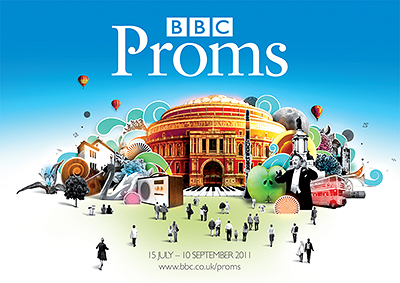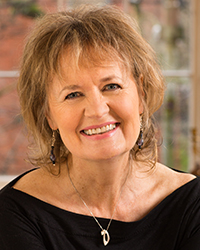 The first chamber music première at this year’s Proms took place yesterday afternoon, at the Cadogan Hall. Sally Beamish‘s new work for the Elias Quartet bears two conjoined titles, reflecting different aspects of the work: Reed Stanzas throws together modern notions of marshland and poetry, while String Quartet No. 3 reminds us the work is part of an ongoing series of works that in turn aspire to be part of a much older compositional lineage. Beamish has lived in Scotland for over 20 years now, and it’s to one the country’s indigenous musical traditions that she turns first, utilising second violinist Donald Grant’s dual talent as a Scottish fiddle player. Scotland also plays a part in the compositional tone of the piece; Beamish wrote the work on the Outer Hebridean island of Harris (a place i know well from my own times in Scotland), a landscape with outlandish contrasts of terrain, featuring Mediterranean-like beaches, angular grey mountain country, and vast tracts of rather desolate scrubland. It’s the latter that Beamish has uppermost in mind, alongside an equivalent landscape of East Anglia, the “Reed” in the title alluding to the region’s wonderful areas of marsh- and fenland; together, they evoke for Beamish a “vastness” and “loneliness” that is omnipresent in the piece.
The first chamber music première at this year’s Proms took place yesterday afternoon, at the Cadogan Hall. Sally Beamish‘s new work for the Elias Quartet bears two conjoined titles, reflecting different aspects of the work: Reed Stanzas throws together modern notions of marshland and poetry, while String Quartet No. 3 reminds us the work is part of an ongoing series of works that in turn aspire to be part of a much older compositional lineage. Beamish has lived in Scotland for over 20 years now, and it’s to one the country’s indigenous musical traditions that she turns first, utilising second violinist Donald Grant’s dual talent as a Scottish fiddle player. Scotland also plays a part in the compositional tone of the piece; Beamish wrote the work on the Outer Hebridean island of Harris (a place i know well from my own times in Scotland), a landscape with outlandish contrasts of terrain, featuring Mediterranean-like beaches, angular grey mountain country, and vast tracts of rather desolate scrubland. It’s the latter that Beamish has uppermost in mind, alongside an equivalent landscape of East Anglia, the “Reed” in the title alluding to the region’s wonderful areas of marsh- and fenland; together, they evoke for Beamish a “vastness” and “loneliness” that is omnipresent in the piece.
 The word “Stanzas” in the title is significant structurally; Beamish has composed the work as a series of short episodes, many of which are around a minute long. The first is a solo melody for Donald Grant, beginning from a distance, walking onstage, projecting an evocative, folk-like melody, shaped by characteristic slides. In all sorts of ways, this sets the tone for much of what’s to follow, particularly in terms of tessitura; almost the entire piece is situated in the higher registers of the instruments. Beamish wastes no time in incorporating that opening solo into the rest of the ensemble, although initially the other three keep their supporting material gentle. Each new episode unveils a new connotation or angle on the work’s overall melodic thrust; it’s difficult to hear whether it’s actual material development—and whether these episodes are, in fact, variations of a sort—or simply elaborating the ‘tone of voice’ Beamish has established, but it hardly matters. Both the relative restraint as well as the preoccupation with upper registers bestows on the music an engaging intensity, although the (at times, rather regular) movement from episode to episode seems to disjoint Beamish’s over-arching sense of direction, somewhat undermining the otherwise rather organic and fluid nature of the music. This is true beyond just the structure; it also feels as though the assortment of simple inspirations brought together here are most of the time left to mingle without any one of them taking meaningful precedence over the others (so, despite the origins in Scottish fiddle music, there are few overt melodic outbursts, for example).
The word “Stanzas” in the title is significant structurally; Beamish has composed the work as a series of short episodes, many of which are around a minute long. The first is a solo melody for Donald Grant, beginning from a distance, walking onstage, projecting an evocative, folk-like melody, shaped by characteristic slides. In all sorts of ways, this sets the tone for much of what’s to follow, particularly in terms of tessitura; almost the entire piece is situated in the higher registers of the instruments. Beamish wastes no time in incorporating that opening solo into the rest of the ensemble, although initially the other three keep their supporting material gentle. Each new episode unveils a new connotation or angle on the work’s overall melodic thrust; it’s difficult to hear whether it’s actual material development—and whether these episodes are, in fact, variations of a sort—or simply elaborating the ‘tone of voice’ Beamish has established, but it hardly matters. Both the relative restraint as well as the preoccupation with upper registers bestows on the music an engaging intensity, although the (at times, rather regular) movement from episode to episode seems to disjoint Beamish’s over-arching sense of direction, somewhat undermining the otherwise rather organic and fluid nature of the music. This is true beyond just the structure; it also feels as though the assortment of simple inspirations brought together here are most of the time left to mingle without any one of them taking meaningful precedence over the others (so, despite the origins in Scottish fiddle music, there are few overt melodic outbursts, for example).
But it no doubt feeds into the ‘loneliness’ which was alluded to before; there’s a wistful quality to all this, of melodies half-heard, as though caught on the wind. and Beamish’s extensive experience as a string player lends the work an idiomatic rigour that is surprisingly reassuring; in this respect, to put it crudely, it’s seriously well-written, and illustrates beautifully that a composer need not reach into the realm of extended techniques to create music of interest. There’s an awful lot one can do with simple bowing and plucking, and if, taken as a whole, Reed Stanzas feels just a bit too held in check, there’s a strength of evocation here that is satisfying beyond its first impressions.
